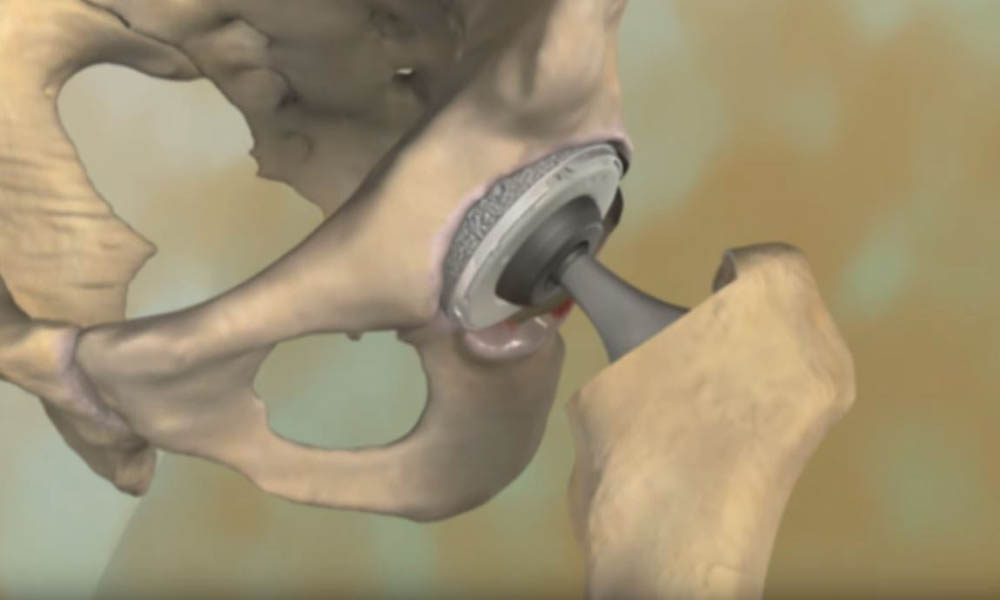Treatment
Outpatient Total Joint Replacement
Outpatient, or same-day, total joint replacement has been performed in the U.S. for more than 20 years. The number of outpatient joint replacement procedures has continued to increase as hip, knee, and shoulder replacement have become more common and more refined.
The COVID-19 pandemic has led to even more interest in outpatient joint replacement by both patients and surgeons, as patients have sought to avoid being admitted to hospitals. In fact, many surgeons now perform a majority of their total hip, total knee, and/or total shoulder replacements as outpatient same-day surgeries, and it is projected that 51% of joint replacements will be done on an outpatient basis by 2026.
What is outpatient total joint replacement?
Traditionally, total joint replacement was performed only in an inpatient setting. This means that the patient is admitted to a hospital and kept in the hospital while they recover.
- The very first total hip replacements required a hospital admission of up to 3 months.
- As recently as 20 years ago, patients spent around 5 days in the hospital after a hip, knee, or shoulder replacement.
- Within 10 years, the length of stay had dropped to 2 to 3 days.
Now, patients either stay in the hospital for 1 night after surgery, or they have an outpatient procedure, meaning they are discharged home the same day as their surgery.
How did outpatient total joint replacement surgery become possible?
There are four main medical advances that have made outpatient joint replacement possible.
More effective anesthetics and pain control. Advances in regional pain control (numbing a specific part of the body) include:
- Spinal and epidural injections for hip or knee replacement, which completely numb up the hip or knee area for surgery.
- Brachial plexus injections that numb up the entire shoulder and arm area for shoulder replacement surgery.
- Injections of local anesthetic medications around the area of surgery (periarticular) that provide longer-lasting pain relief and enable patients to use less opioid pain medication than in the past.
Use of these techniques means patients need less general anesthesia, which means a faster and more natural recovery after surgery.
In addition, “multimodal pain control,” which involves using multiple types of pain medications (e.g., acetaminophen, and nonsteroidal anti-inflammatory drugs, or NSAIDs, like ibuprofen and naproxen) has also resulted in less need for narcotic pain medication, including opioids. Less heavy-duty narcotic pain medication usage has helped joint replacement surgeons provide better, safer pain control, so patients can recover more effectively at home.
More refined surgical techniques. Advances in surgical technique have shortened procedure times and reduced blood loss. A medication called tranexamic acid (TXA) has further reduced blood loss and made blood transfusions rare after total joint replacement surgery. These techniques have led to improved recovery after surgery.
Improved pre-operative safety and patient selection. Over the many years of doing outpatient surgery, joint replacement surgeons have learned to identify which patients do well with outpatient surgery, and which patients should stay overnight at a hospital after surgery. Surgeons are therefore able to determine if patients are safe for outpatient surgery based on the patient’s:
- Age
- Pre-existing health conditions (heart disease, lung disease, kidney disease, etc.)
- Home environment, including social support
More focused physical therapy (PT) and occupational therapy (OT) within hours of surgery. Over the past decade, more focused PT and OT has become the standard of care for hip, knee, and shoulder replacement patients. Study after study has shown that getting patients out of bed and walking around the same day, and in many cases just a few hours after surgery, leads to a quicker discharge home and a better, faster recovery with fewer complications.
Where can outpatient total joint replacement be performed?
There are two main types of facilities in which an outpatient total joint replacement surgery can be performed:
- Hospital operating rooms. Historically, most total joint replacements have been performed in hospital ORs.
- Ambulatory, or outpatient, surgery centers. Ambulatory surgery centers have been around in the U.S. for several decades. Some ambulatory surgery centers are housed within hospitals but function independently, while others are free-standing facilities. Some surgeons who are on the faculty at a hospital may choose to perform some or all of their outpatient procedures at an ambulatory surgical center.
Both types of facilities have advantages and disadvantages, and patients are often better suited to one location or the other.
What is an ambulatory (outpatient) surgery center?
An ambulatory surgery center is a facility specifically designed for outpatient surgery. Patient care and surgical protocols are typically more closely controlled by the surgeon. The location is typically easy to access and navigate.
These facilities have:
- A preoperative area to get you ready for surgery
- Operating rooms where surgery is performed
- Recovery areas for after surgery
Once a patient is fully recovered from anesthesia after surgery, they are picked up by a friend or family member and driven home that same day.
Is it safe to have outpatient total joint replacement surgery?
In many studies, outpatient total joint replacement has been shown to be safer than staying overnight in a hospital and is also associated with high patient satisfaction rates.
Patient selection for outpatient surgery is perhaps the most important part of the outpatient surgery process. Studies evaluating more than 100,000 total joint replacements have helped identify which patients are safe for outpatient surgery and which should stay overnight in a hospital after surgery. These studies have allowed surgeons to identify patients who are good candidates for outpatient total joint replacement.
Your surgeon will consider a variety of factors to determine whether outpatient hip, knee, or shoulder replacement surgery is safe for you including:
- Your age.
- Major medical issues such as severe heart failure, chronic obstructive pulmonary disease (COPD), obstructive sleep apnea, kidney failure, or dialysis increase the risk of complications and require close monitoring after surgery. As a result, if you have one or more of these issues, it may be safer for you to have your procedure performed in a hospital setting.
- Your ability to walk and move around independently without a cane or walker.
- Your home support system — a strong support system is essential for your safe discharge home and to ensure that you can get to your physical therapy appointments.
Which other orthopedic procedures are typically performed at outpatient surgery centers?
The majority of orthopedic surgeries can now be done on an outpatient basis:
- Spine procedures, including spinal fusion, anterior cervical spine disk fusion (ACDF), cervical spine disk replacement, lumbar discectomy, lumbar laminectomy, and lumbar spinal fusion
- The majority of hand, elbow, foot, and ankle surgeries
- Knee, hip, and shoulder arthroscopy (“knee scope,” “hip scope,” and “shoulder scope” procedures)
What are the risks of having outpatient total joint replacement?
A lot of research has been done to determine which patients are appropriate candidates for outpatient surgery. While patients who have outpatient total joint replacement have lower complication rates and better satisfaction scores than those who stay overnight at a hospital after surgery, not all patients are candidates for outpatient total joint replacement.
Your surgeon and anesthesiologist will determine whether it is safe for you to have your joint replacement as an outpatient procedure. Patients with serious heart, lung, kidney, or other medical problems could be at increased risk for complications and may need presurgical testing to determine whether it is safer to stay overnight in a hospital after their surgery.
What are the benefits of outpatient total joint replacement?
The benefits of outpatient joint replacement, as shown by extensive research, include:
- Less pain
- Lower infection rates, which means a lower risk of needing additional surgery
- A more comfortable, faster recovery in your own home
- Earlier mobility (moving around) and less time spent lying in bed, which helps reduce blood clots, urinary tract infections, constipation, and pneumonia
- Higher self-reported satisfaction with the joint replacement process
How should I prepare for an outpatient total joint replacement procedure?
Successful outpatient total joint replacement requires planning ahead. There are many things you can do to help prepare for outpatient joint replacement, and your surgeon and their team will help guide you through the process.
- If you are having a total hip or knee replacement, it can be beneficial to set up one-level living, as you may find it difficult to climb stairs in the immediate time period following surgery.
- Many patients will require physical therapy right after a total knee or total shoulder replacement, and it can be helpful to schedule your first few sessions ahead of time.
- Hip and knee replacement patients should have a cane and walker at home ready for use.
- For several weeks after surgery, shoulder replacement patients are often more comfortable either sleeping in a recliner or using a large wedge pillow to elevate the back. You may want to arrange this ahead of time.
- It can be helpful to pick up your medications ahead of time and have them ready for when you get home. This may include pain medications, blood thinners, medications for nausea, and medications to help prevent constipation.
- It is helpful to have a friend or family member available to transport you to physical therapy and doctor appointments, as you will not be able to drive for a period of time after surgery. Your doctor will tell you when it is safe for you to resume driving.
- It is also helpful to arrange to have food and meals prepared, as you will not likely want to do this immediately after surgery.
- Continuous cold flow or cryotherapy systems, such as a Polar Care, are very effective for pain control after knee and shoulder replacement. If your insurance does not cover this device, you may want to purchase one and have it available ahead of time.
Learn more: Preparing for Joint Replacement Surgery
If you have difficulty making these or other arrangements for financial reasons or because you live alone, learn how you may be able to get help before your surgery: Joint Replacement for Patients With Limited Social or Financial Resources
Where can I get more information about outpatient joint replacement?
Talk to your surgeon about whether you are a candidate for outpatient total hip, knee, or shoulder replacement. They will conduct a thorough evaluation to determine the best option for you.
Last Reviewed
September 2022
Contributed and/or Updated by
Peer-Reviewed by
AAOS does not endorse any treatments, procedures, products, or physicians referenced herein. This information is provided as an educational service and is not intended to serve as medical advice. Anyone seeking specific orthopaedic advice or assistance should consult his or her orthopaedic surgeon, or locate one in your area through the AAOS Find an Orthopaedist program on this website.








